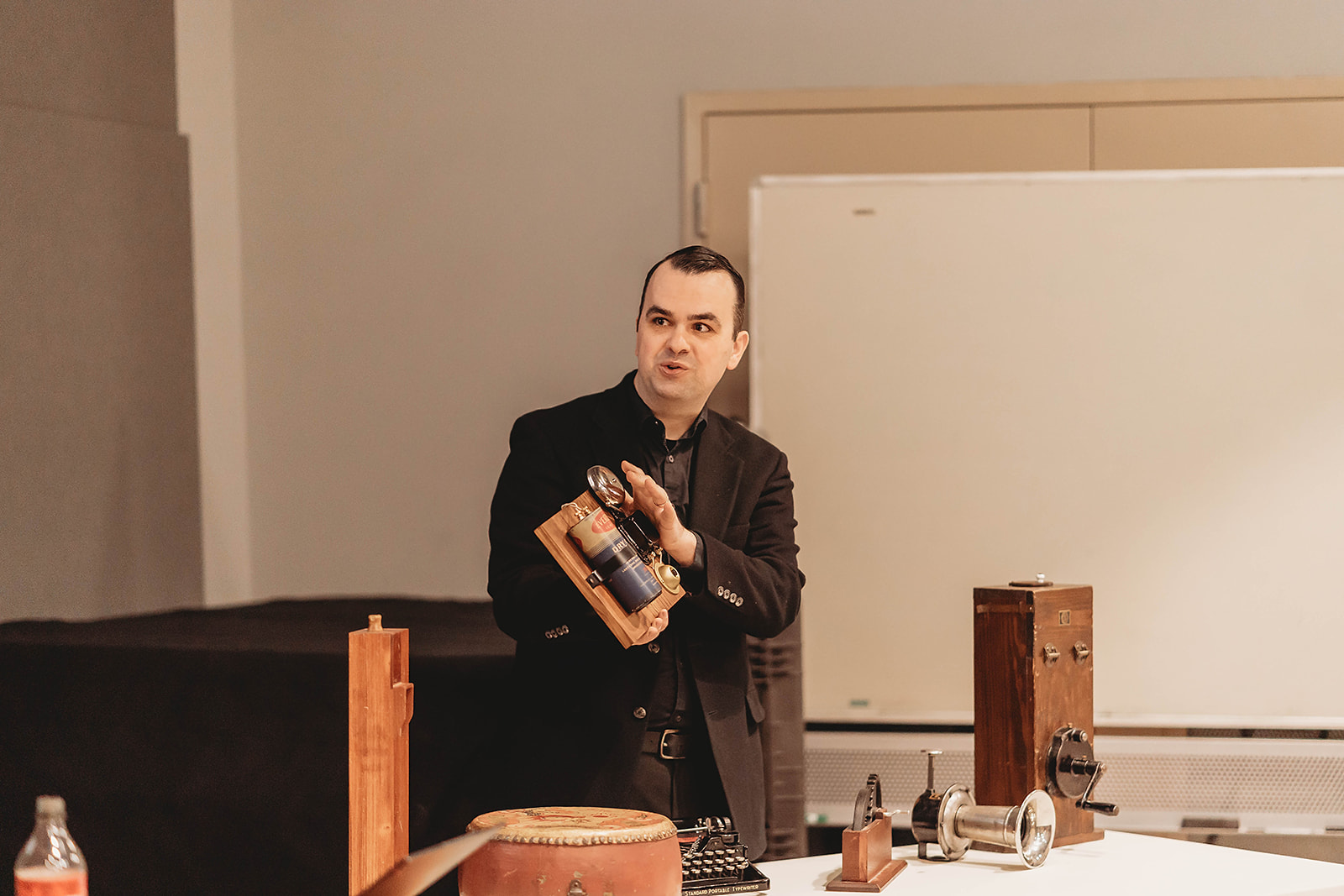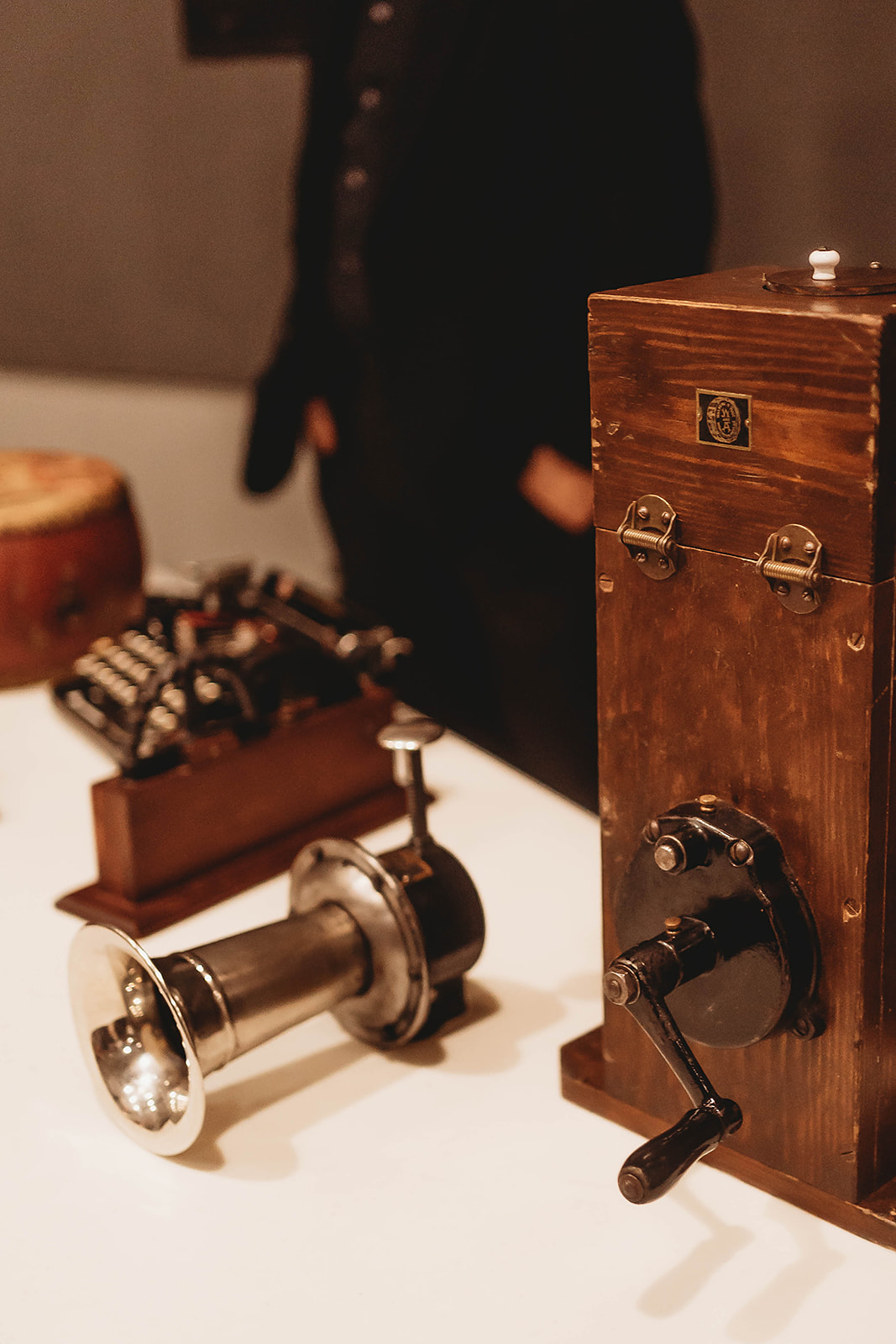
As you watch Killers of the Flower Moon, which received double-digit Oscar nominations this year, you quickly become part of the Oklahoma oil industry in the 1920s—until the very last scene. The final five minutes of the movie places you in the middle of a radio drama taking place nearly a decade later.
When the production team needed to bring this scene to life, they reached out to Northwestern University’s own Assistant Professor Neil Verma. An expert in the history of radio drama, he has studied sound and audio fiction for years—even writing an award-winning book on the topic called Theater of the Mind.
“In the beginning, being involved in the movie seemed more like a discussion and the chance to offer advice,” explains Verma. “But, at a certain point, the feedback I was giving on the script was coming back to me with Scorsese’s notes on it. That’s when it hit me: This was a big opportunity. You never envision being called on for something like this.”
Around the same time, the movie’s fabrication team also reached out to well-known Chicago-based performer and musician Nick White about his one-of-a-kind collection of antique sound-effect instruments.
The set decorations buyer was on the hunt for vintage sound props to purchase or rent. “I told them I was part of the package,” says White. “No one but me can play those instruments.” That’s all the convincing it took for them to also bring White on board to support the final scene.
Setting the Right Stage
While some work was done remotely, Verma and White also spent time in New York in late 2022 to finetune and provide feedback on sound effects and sequences. They returned to the Bronx for filming in Spring 2023.
“A group of us worked together to determine what a radio drama would’ve looked like back then,” says Verma. “Everyone on set had very thoughtful comments and well-articulated questions about everything from sound-effect timing to which reference recordings to use during editing.”
While the final scene has a surreal quality to it, he points out that achieving surrealism first requires reality. In other words, everything on the set needed to be perfect—from using period-appropriate microphones to proper placement of the sound control booth.
“Neil is the undisputed expert in all of this,” says White. “I was more the provider of the instruments for sound effects. But I couldn’t help but start to research radio studios so I could be more intellectually involved in the project as well.”
As Verma worked with the art department to establish the set, White accelerated his own contributions as he helped source and build some of the movie’s props, including a jail cell door.
The two also worked together on how and where to use White’s antique instruments.
A Unique Approach to Sound Effects
 When it comes to sound for the final scene, Verma helped the team create the right effects while minimizing the number of devices required to achieve them. (For example, a piece of sandpaper can sound like someone writing a letter—or lighting a match.)
When it comes to sound for the final scene, Verma helped the team create the right effects while minimizing the number of devices required to achieve them. (For example, a piece of sandpaper can sound like someone writing a letter—or lighting a match.)
Because timing was critical in the era of live radio, it was critical in this scene as well, he explains. For example, when Jack White, who plays a radio drama character, talks about a shooting, the team decided to insert the sound of a gunshot in the middle of his sentence rather than before or after.
“That makes it more aggressive,” Verma explains. “Small things—like helping with the timing of sound queues—was an important part of the sound work we did, along with things like deciding when the music fades or amplifies, and when the announcers should speak.”
Making this task more challenging was the fact that the script was being rewritten in real-time—something White says is unique to Scorsese films. “They were constantly adding things to and subtracting things from the script—and that included sound effects.”
While the script started with seven sound effects, that number more than doubled once the team saw the wide variety of instruments available—and White’s ability to play them.
A Once-in-a-Lifetime Experience
All in all, Verma and White waited nearly two years to see their work come to life—a timeline that was drawn out due in part to the pandemic. In between the film’s working sessions, Verma continued to teach at Northwestern, while White continued his role as an orchestra musician, music teacher, and performer with the San Francisco Silent Film Festival.
“For me, this experience felt familiar,” says White. “Being an orchestra musician and doing sound-effect performances for silent films made me feel very comfortable here. I’ve been in other productions before—but this one had a director and cameras.”
“We definitely contributed to something important,” says Verma. “It was a privilege to work on a film that not only covers an important topic and is led by a great filmmaker, but also required my area of expertise.”
Read more on our blog and follow Northwestern’s Sound Arts and Industries program on Facebook and Twitter.
